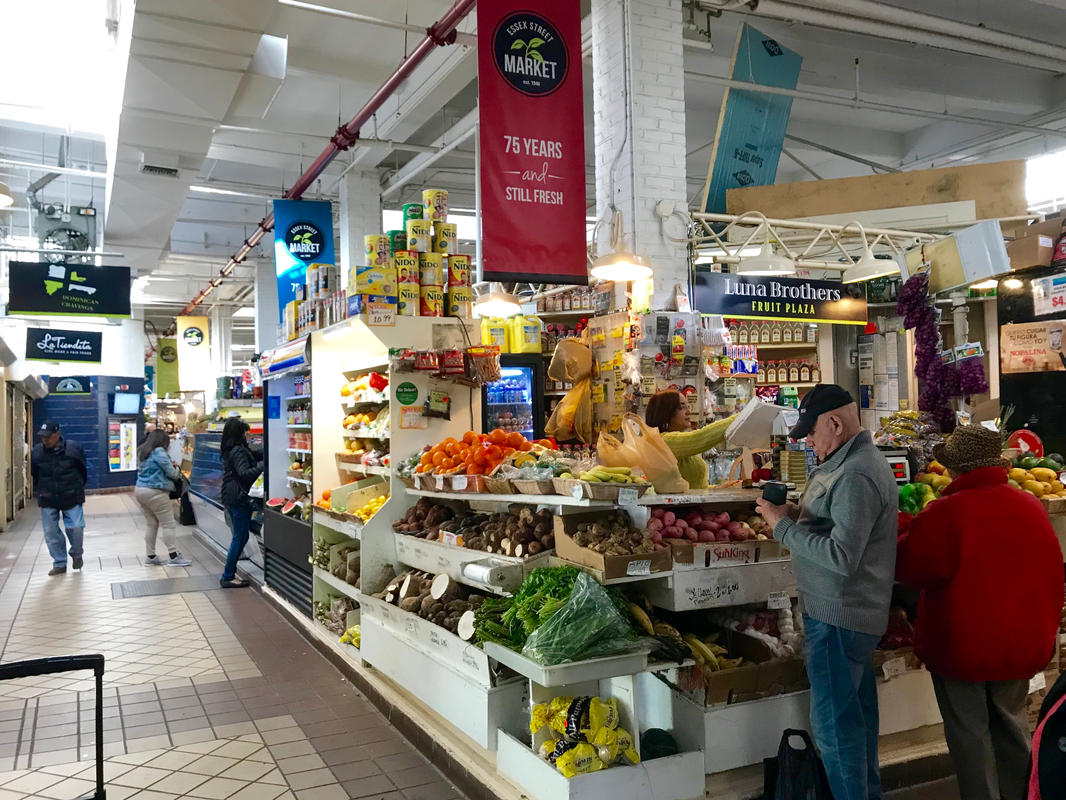The Essex Street Market, on the corner of Essex and Delancey Streets, has been a mainstay of the Lower East Side for over seventy years since it first opened in 1940 at the behest of Mayor Fiorello La Guardia to get pushcarts off the crowded streets. This May, the marketplace which has served as a neighborhood social spot and a place to stock up on provisions like meat, fresh produce and other groceries, will close its doors.
The original Essex Street Market will be replaced by a brand new marketplace just across the street. The new space is the cornerstone of Essex Crossing, a 1.9 million square-foot redevelopment project, and Untapped Cities recently got a sneak peak inside the new space before vendors moved in. The majority of the market’s original vendors will make the move across the street to the new space where they will be joined by two full service restaurants and fourteen new vendors. Untapped Cities visited the original marketplace to photograph and have a look inside one last time before it closes next month.
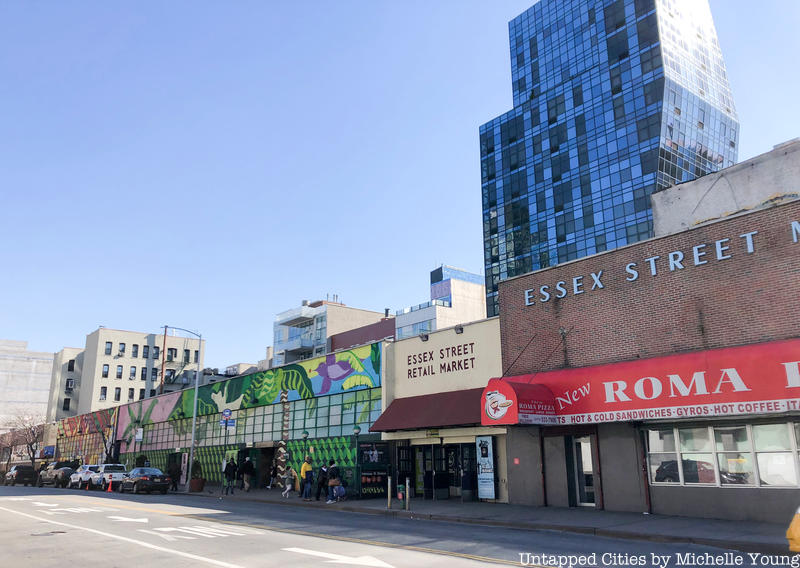 Drawing from the market’s history, artist Gera Lozano painted the entire length of the Essex Street Market over the course of several days in 2016
Drawing from the market’s history, artist Gera Lozano painted the entire length of the Essex Street Market over the course of several days in 2016
The current market, which is home to twenty-eight independent vendors, opened in 1940 and originally contained 475 stalls spread throughout four separate buildings across three city blocks. The original indoor markets in New York City were an initiative by Mayor Fiorello LaGuardia, who “waged a war on pushcarts,” like he did with many other aspects of the city he considered urban nuisances. Creating indoor markets were a lot less disruptive and more productive than sledgehammering slot machines and dumping them into the river, for example. In total, LaGuardia would close over 40 outdoor pushcart markets. The Essex Street Market, the Arthur Avenue Market in the Bronx, the Moore Street Market in Brooklyn, and La Marqueta in Harlem are the last remaining of the ten markets created under LaGuardia.
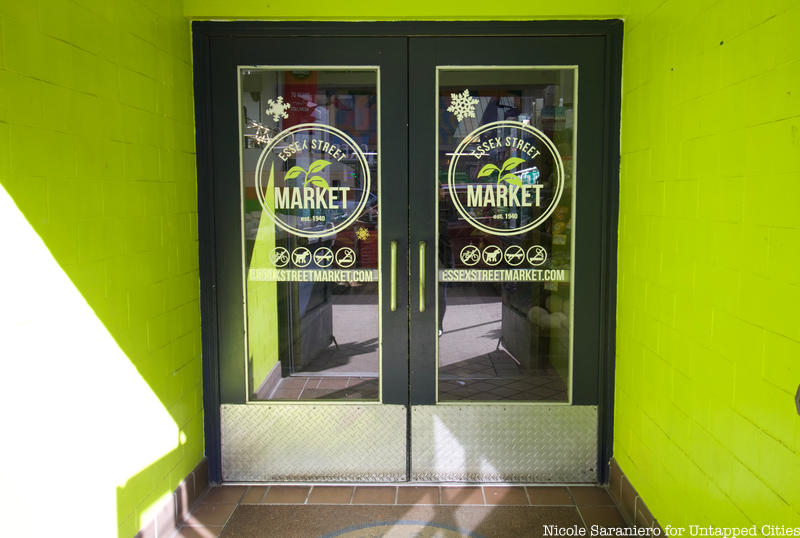
\All of the vendors were condensed into one space, the current Essex Street Market building, in 1995 as part of a $1.5 million renovation conducted by the New York City Economic Development Corporation. It was the only renovation done in the history of the Essex Street Market. The NYCEDC is also responsible for the new market, as well as projects at the Brooklyn Army Terminal, NYC Ferry Service, and many more throughout the city. Smaller spaces and subsidized rent has enabled vendors like Essex Olive and Spice House, Saxelby Cheesemongers, Puebla Mexican Food, Osaka Grub and Peasant Stock, all small businesses we visit on our Essex Street Market Food tour, to thrive. Many started on the food truck circuit, and find a brick and mortar location at the market.
 Photo by Christina Han Photography
Photo by Christina Han Photography
A corner like Shopsin’s, serving its famous 900-item menu, has also survived at Essex Street Market, even beyond the founder’s passing in September 2018. It too will move across the street to the new market in May.
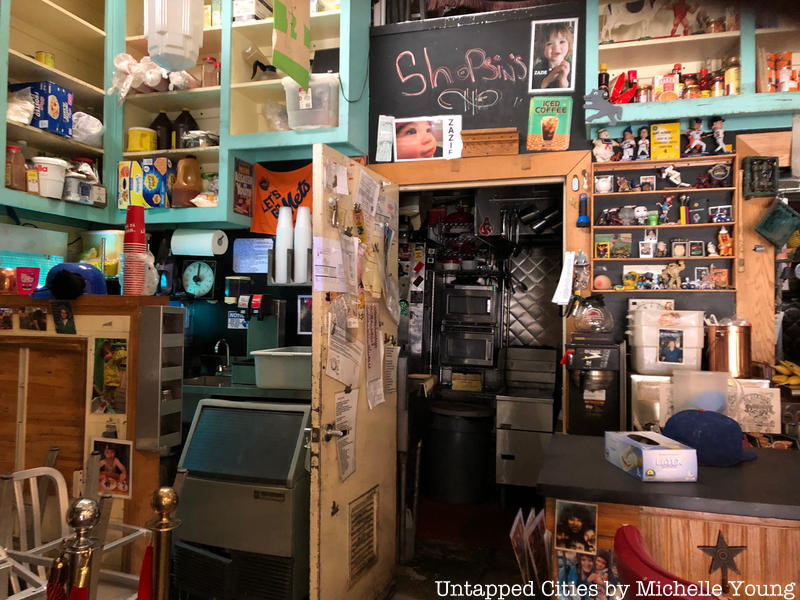
The mural which lines the side of the market, the longest continuous mural in lower Manhattan, was created by artist Gera Lozano. Lozano drew inspiration from the colorful fruits and vegetables sold inside. There are also five murals inside the market, including geometric representations of bread, cheese, and food offerings.
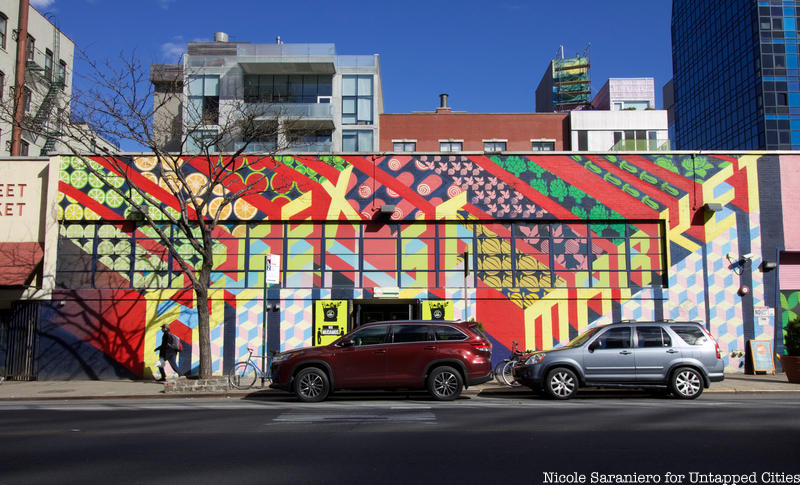
Check out more photos below from inside the current Essex Street Market and take a last stop inside. Before the new market opens, you can take a look at preview photos of the space from our most recent visit.
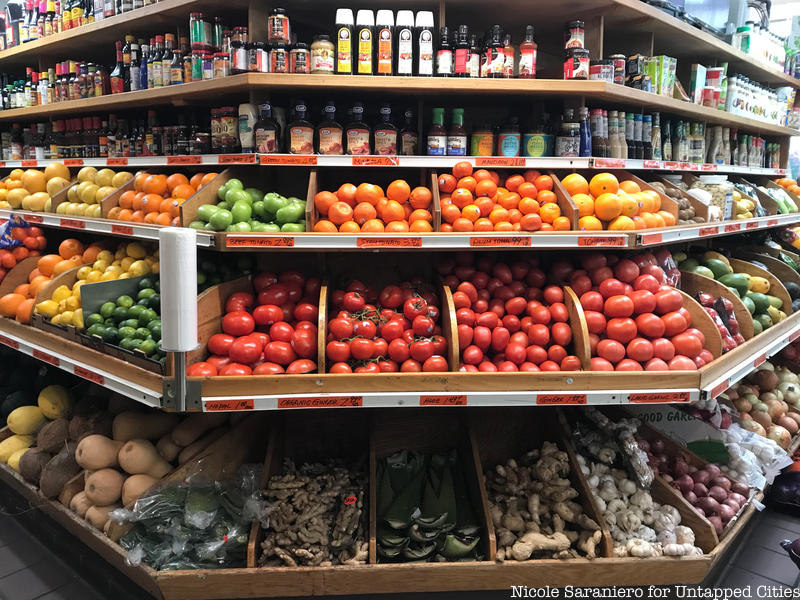
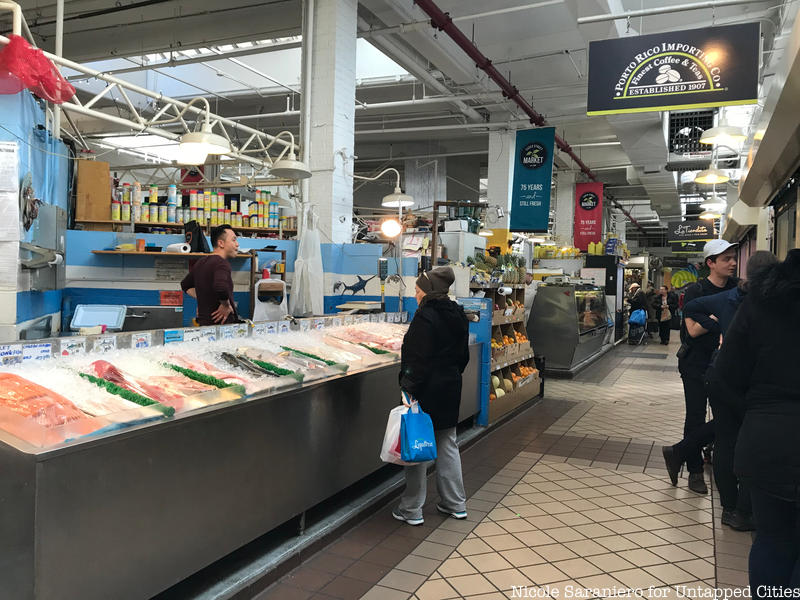
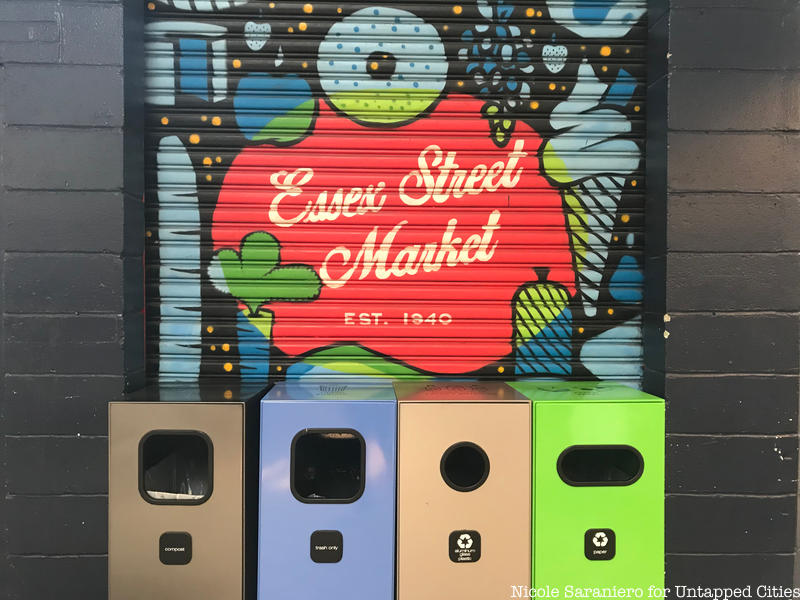
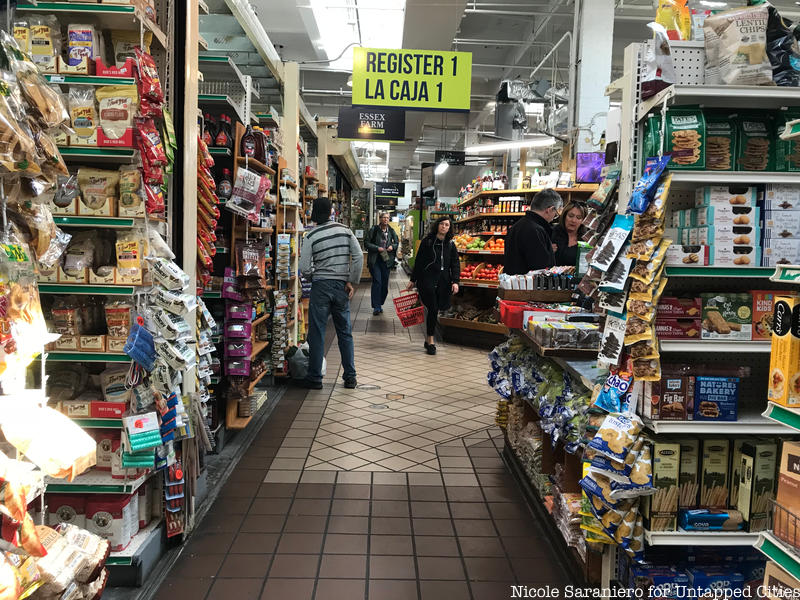
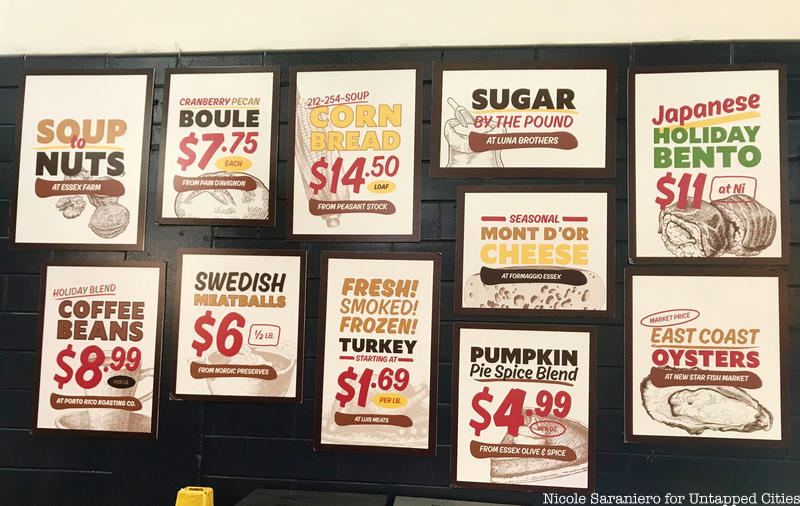
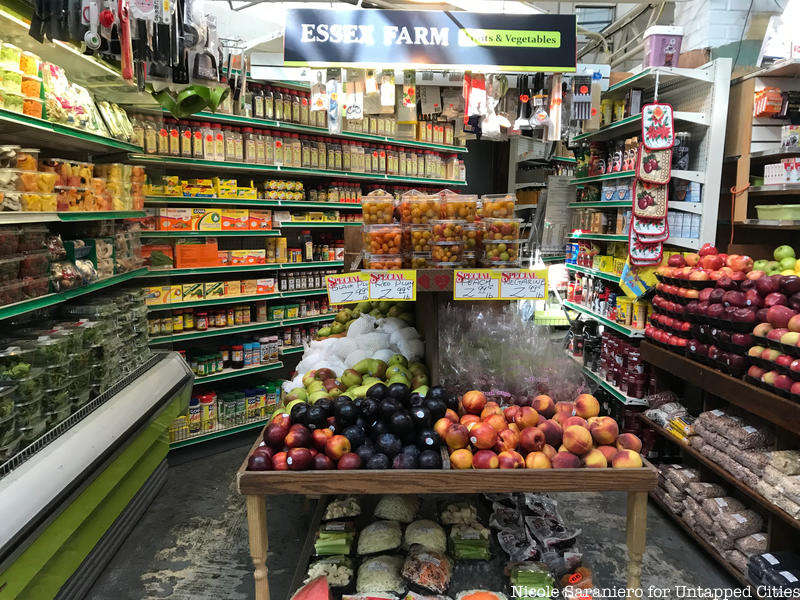
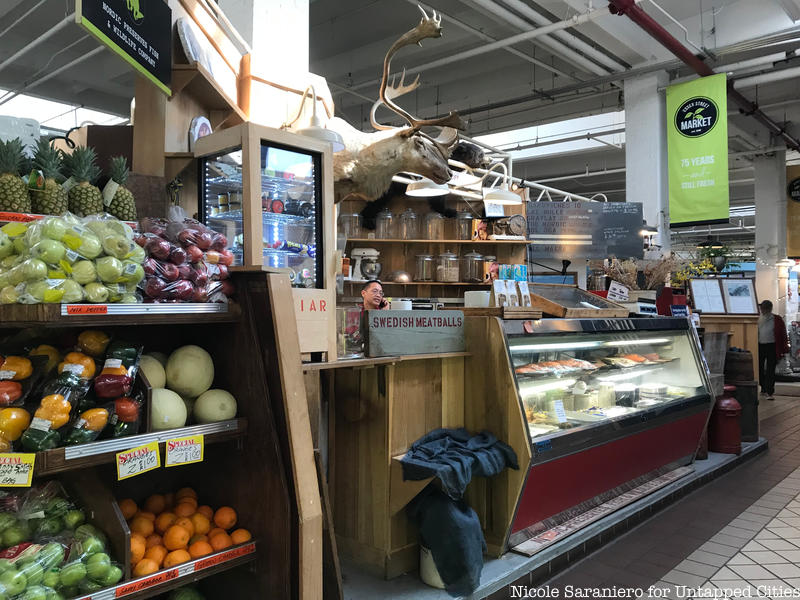
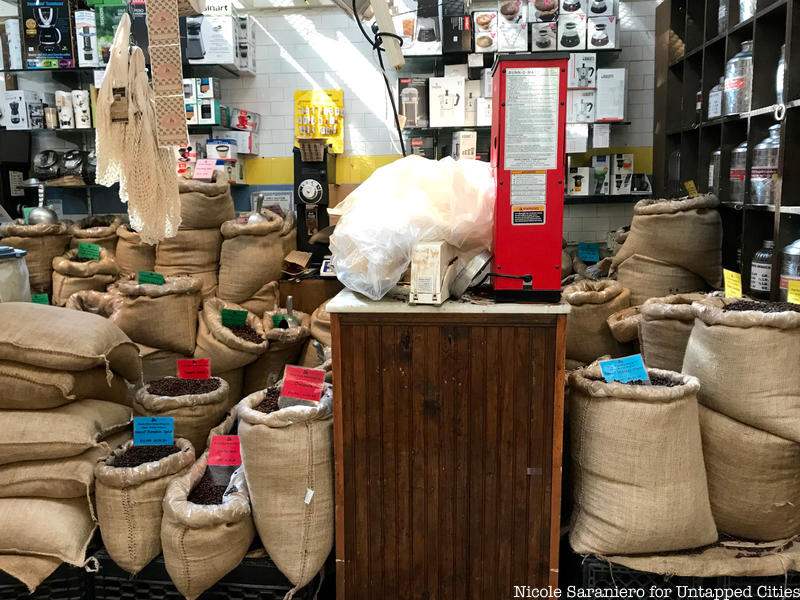
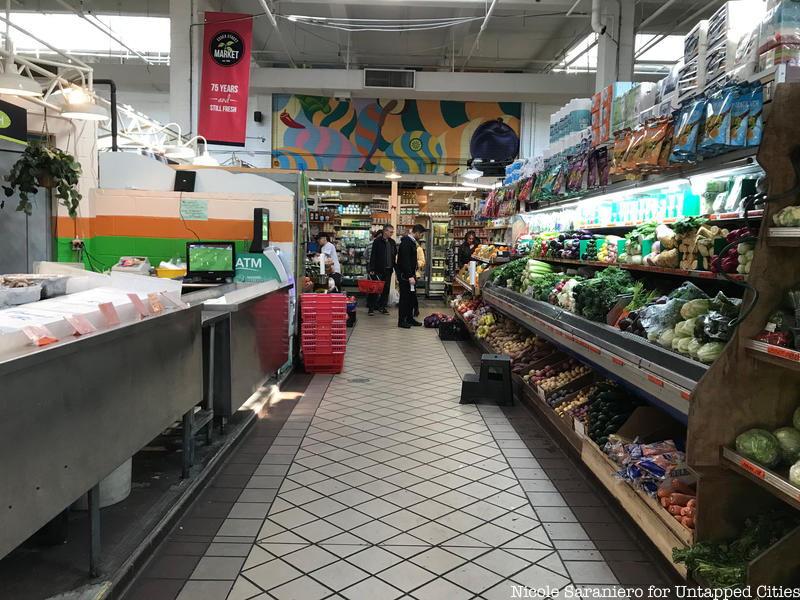
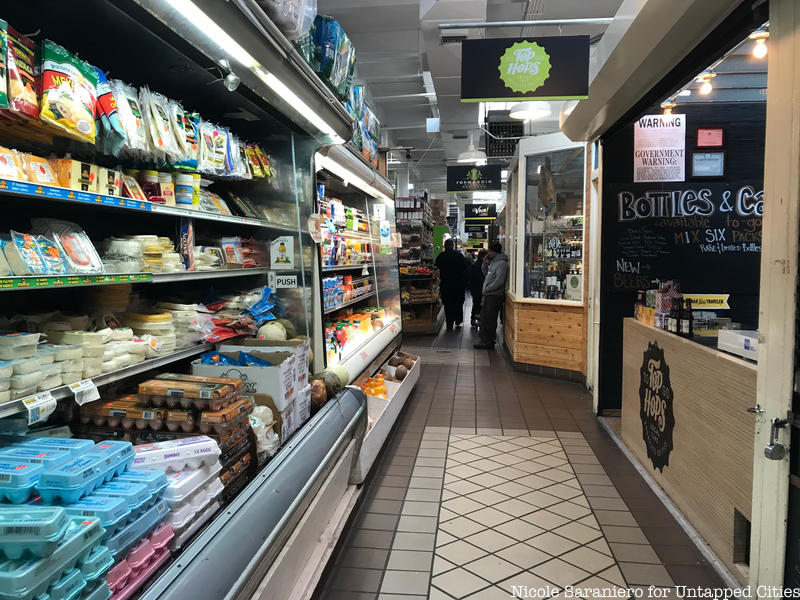
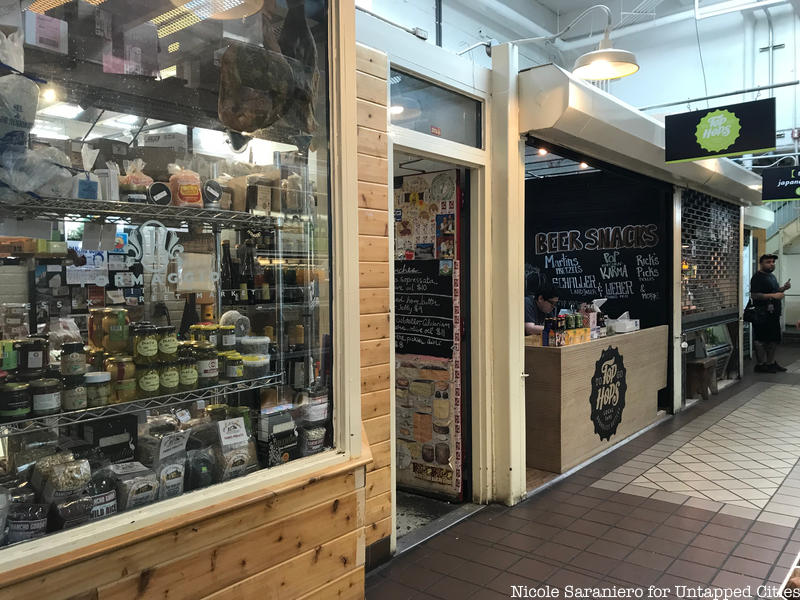
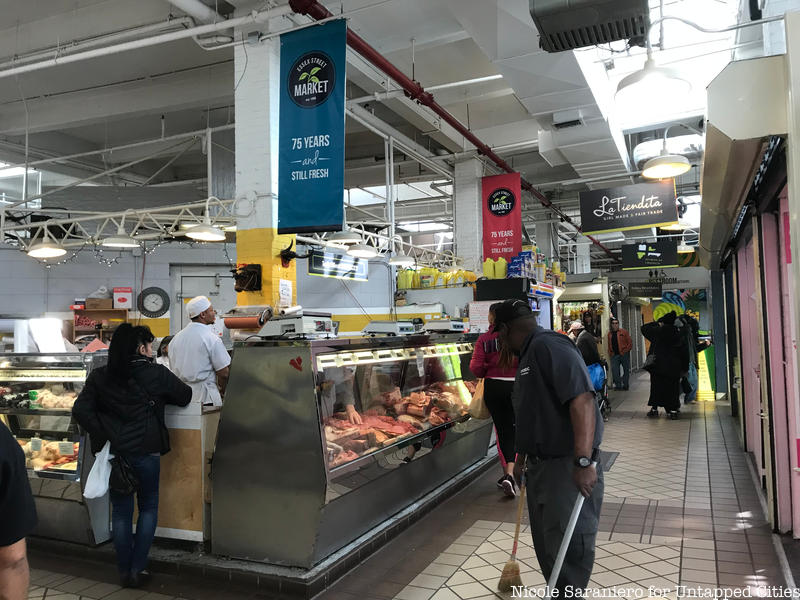
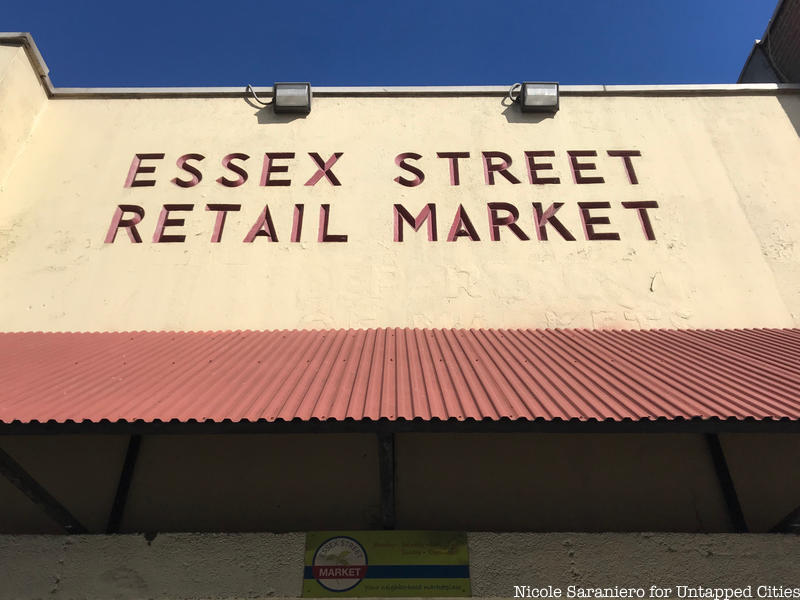
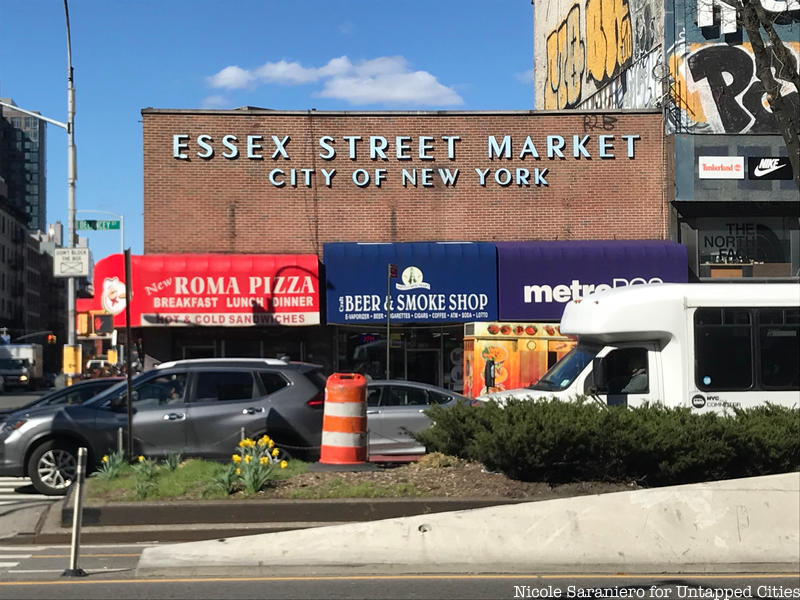 During the 1995 renovation, original signage was left on the exterior. In the new market, a neon sign found at the site has been restored and hung up in the new space as an homage to the market’s history.
During the 1995 renovation, original signage was left on the exterior. In the new market, a neon sign found at the site has been restored and hung up in the new space as an homage to the market’s history.
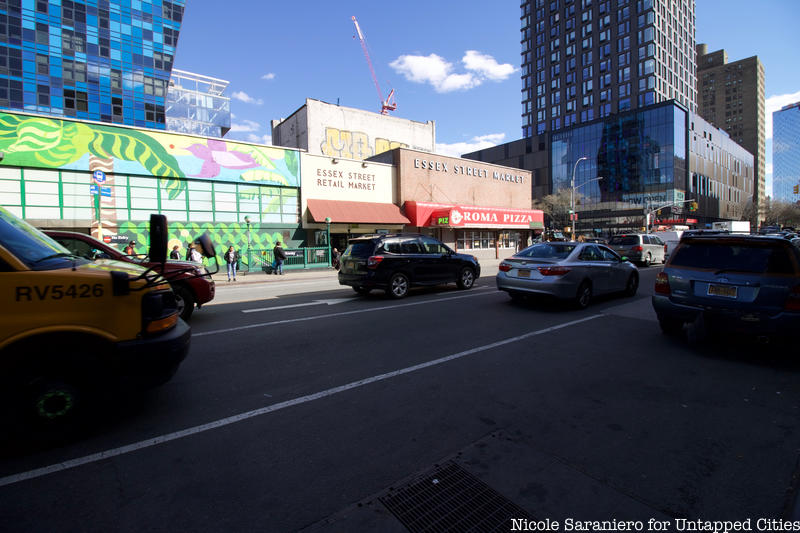 The old Essex Street Market with the new one across the street
The old Essex Street Market with the new one across the street
The current market will close just before the new one opens this May as vendors move across the street and get settled into their new spaces.
Next, check out Sneak Peek Inside the New Essex Street Market in NYC’s Lower East Side and 10 Fun Facts about NYC’s Essex Street Market, a Lower East Side Survivor






